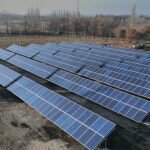Reforestation plays a vital role in combating climate change by removing carbon dioxide from the air. Carbon is stored in trees and soil while oxygen is released to the atmosphere.
No matter where the trees are planted, trees are able to absorb carbon dioxide and release pure oxygen into the air.
Can reforestation help combat climate change?
As deforestation is on the increase, the climate has changed significantly, it’s become warmer, more severe climate conditions are causing more difficult growing conditions for the forest ecosystem.
Reforestation could reduce the severity of climate change because it can absorb the excess carbon in the atmosphere.
The International research team, using direct measurements of forest cover around the world to make a model for estimating the earth’s forest restoration potential.
They discovered earth’s ecosystem could support another 900 million hectares, which is 2.2 billion acres of forests, 25% more forested area than we have presently.
Planting more than a half trillion trees could capture about 205 gigatons, which is 1 billion metric tons. This will greatly reduce the carbon in the atmosphere by about 25% which is enough to nullify about 20 years of carbon produced by humans.
One acre of mature trees can provide enough oxygen for 18 people.
How reforestation can curb the issue of climate change
It has been established that trees absorb carbon dioxide ( CO2) and release oxygen into the atmosphere, it is recorded that an acre of mature trees is able to absorb the same amount of carbon released from 26,000 miles of driven car.
They also absorb pollution from nitrogen, oxides, ammonia, sulfur dioxide and ozone; it filters particulates out of the air by trapping them on the leaves and bark.
Trees provide shade during adverse hot weather, they also release water vapour into the air through their leaves.
With trees around the home, the energy demand for cooling can be reduced thereby reducing carbon dioxide and pollution emissions from power generators.
Trees allow rainfall runoff water to flow down to the trunk and into the earth below them. This prevents stormwater from carrying pollutants to the oceans; it acts like a sponge to recharge groundwater supplies.
They further prevent erosion by holding soil in place, especially for hillsides or slopes.
Trees give life to wildlife as many of them depend on trees to survive as regards food and home.
Trees are a big part of the earth as regard climate change, they can be used to curb the amount of greenhouse gas (GHG) emission, giving the earth oxygen, stabilizing the soil, and giving life to wildlife.



















